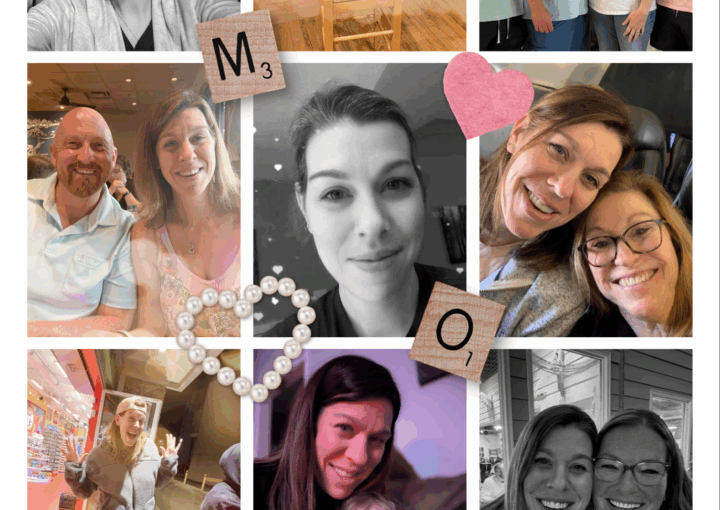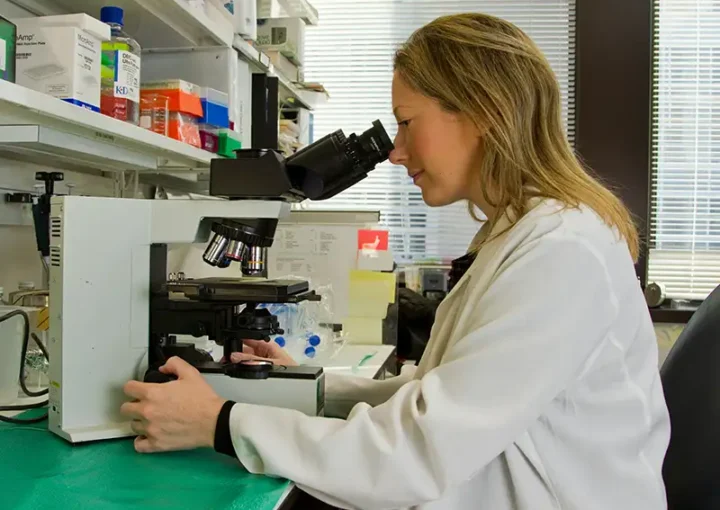
Our Progess
A life-saving answer to HMERF is within our reach, and we are making great strides. Because of you, we can make a difference and continue our relentless pursuit of developing a therapeutic for HMERF.
We continue to make progress.
As you may know, we officially began our research partnership with a laboratory in Austin, Texas in November 2023. While the pace of progress hasn’t matched our earliest hopes, we are moving forward — pursuing a promising and innovative approach that could, if successful, change the future for all those affected by HMERF.
We’re currently running two concurrent studies.
Study A: Mouse Models
We are developing two families of genetically modified mice:
-
Family One carries the HMERF-causing gene mutation.
-
Family Two does not carry the mutation.
Both groups are thriving in their “mouse condos” — the lab’s term for their safe and enriching environments. Family One is now about three months old and, as expected, is not yet showing any symptoms. Family Two is also about three months old and remains symptom-free. This is especially encouraging; it suggests that the absence of the gene does not result in any negative physical consequences for the mice — an important confirmation of the gene’s role in the disease.
Study B: ASO Therapeutic Development
In this study, we are developing a targeted treatment known as an antisense oligonucleotide (ASO) for Exon 344 of the TTN gene, which codes for the titin protein. This work began in January 2024 and continues on track. The ASO has been synthesized and is currently being tested in differentiated muscle cells. While results are still pending and additional testing is required, we remain cautiously optimistic.
We are deeply grateful for the guidance of our Scientific Advisory Board, comprised of leading HMERF experts. Their insight has already prevented costly missteps, saving significant research dollars and accelerating our progress while supporting the diligent and tire less work of our researchers.
That said, Casey and I remain committed to sharing both hope and honesty. We’re not there yet — and we don’t yet know when we will be. Casey often reminds me that hope, while essential, must be offered with care — because when it’s shared too soon or too broadly, it can lead to heartbreak. Please know: we are working as quickly and wisely as possible. But in this kind of research, timelines are always uncertain.
Still, there are bright moments. One especially encouraging sign: mice that have undergone genetic correction are active and playful — showing no signs of physical decline. It’s a small but powerful reason to keep pushing forward.
From our hearts to yours, thank you for walking this journey with us. Your support fuels the hope we are building — together.
Warmly,

Christine Duane
CEO and Casey’s Mom
Our roadmap to life-saving treatments
A life-saving answer to HMERF is within our reach, and we are making great strides. Because of you, we can make a difference and continue our relentless pursuit of developing a therapeutic for HMERF.
STAGE 1
Target Identification
For HMERF the genetic defect is located on titin protein chain at exon 344. These mutations can disrupt the normal folding and function of the titin protein , leading to muscle damage and respiratory issues.
COMPLETE
STAGE 2
Develop Model
Researchers study the target protein to understand its functionality and then synthesize potential drug molecules that might interact with the target protein. Thousands of compounds are analyzed, seeking ones with therapeutic value..
COMPLETE
STAGE 3
Preclinical Testing
This stage can take up to 6–7 years as researchers synthesize and purify the drug, conduct limited animal testing, and evaluate the therapy in lab (in vitro) and animal (in vivo) models for safety, efficacy, and how it’s processed in the body.
In Progress
STAGE 4
Clinical Trials
This phase tests the drug in humans across three stages. Phase 1 focuses on safety and metabolism in healthy volunteers. Phase 2 assesses safety, effectiveness, and dosage in patients with the target condition. Phase 3 is the largest and costliest, confirming safety and effectiveness in a broader group. Afterward, researchers file a New Drug Application (NDA) with the FDA for review and expert advisory input.
NEXT STEP
STAGE 5
Take drug to market
Using the groundwork of the previous phases, the researchers work toward approval and commercial production of the target treatment that paves the way to changing the lives of these rare disease patients.


